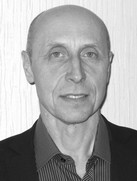'Internal measure of present' as success factor in physical trainings and sports
Фотографии:
ˑ:
PhD, Associate Professor A.V. Astakhov1
K.W. Shishov1
1Tsiolkovsky Kaluga State University, Kaluga
The study analyzes the individual perceptions of a 13-second time span (referred to herein as the ‘internal measure of present’) versus individual biorhythms, with the study findings applicable both in the health physical training and competitive athletic training systems. Biorhythms are known to largely determine the success of physical trainings and sport competitions. Trainees subject to the experiment were proposed to compute their individual 23-day biorhythms and locate the most precise test time spans on the diagrams. The experimental data and analyses showed that the male and female individual perceptions of the 13-second time span were the most accurate in the positive and negative phases of the biorhythms, respectively.
Keywords: physical training and sports, biorhythm, time factor, internal measure of present.
References
- ХХ vek: Khronika neobiyasnimogo. Vremya – nazad [The twentieth century: The chronicle of the inexplicable. A While back]. Moscow: Astrel, Olimp, AST publ., 2000, 432 p.
- Dubrov A.P. Lunnye ritmy u cheloveka [Lunar rhythms in humans]. Moscow: Meditsina publ., 1990, 159 p.
- Kuznetsov Yu.F. Bioritmy cheloveka: fizicheskiy, emotsionalny, intellektualny [Human biorhythms: physical, emotional, intellectual]. Moscow: Amrita-Rus publ., 2006, 384 p.
- Sivakov V.I., Sivakov D.V. Bioritmy fizicheskiy, emotsionalny i intellektualny kak faktor optimizatsii psikhofiziologicheskogo sostoyaniya biatlonistov v nestandartnykh situatsiyakh sorevnovatelnoy deyatelnosti [Physical, emotional and intellectual biorhythms as a factor of optimizing psychophysiological state of biathlonists in non-standard competitive situations]. Teoriya i praktika fiz. kultury, 2007, no. 10, pp. 2-7.
- Shaposhnikova V.I., Taymazov V.A. Sezony rozhdeniya i orientatsiya sportsmenov [Seasons of birth and orientation of athletes]. Teoriya i praktika fiz. kultury, 2004, no. 1, pp. 31-35.



